What do two miniature books kept in Clark’s Archives have in common?
Both are autobiographies of Robert Goddard published by a Worcester hobbyist. And both – or parts of both – have traveled through outer space.
One was brought on board the Apollo 11 mission by Edwin “Buzz” Aldrin Jr., giving the tiny book the distinction of being the first ever to go to the moon. The other, a near-identical copy of the same book, is bound in thinly-sliced meteorite.
The latter is a new acquisition for the Goddard Library, donated by alumnus Ross Heller ’63, an author, publisher and collector of rare books. He delivered the meteorite-bound book to Worcester in November of last year.
In an interview with The Scarlet, Heller explained that he found an advertisement for the book opposite his favorite column in “Fine Books & Collections” magazine several years ago.
Heller jumped at the chance to acquire the book for several reasons. “I’ve got to buy this thing because I graduated from Clark,” he recalled saying to himself. He was also motivated by Goddard’s important legacy, both for the university and for the advancement of science, as well as the book’s “really cool provenance, having been bound in rock.” Heller bought the book for just over $7,000 from Lux Mentis Booksellers of Portland, Maine, around 2019.
When he purchased it, Heller notified Clark’s Goddard Library that he intended to bequeath the book to the university at his death. “I’m 80 years old and in wonderful health – but nobody lives forever,” Heller said. “Then [last] fall, I just started thinking about it and said, ‘Why do I have to wait until I’m gone?’ I talked to the university folks and set it up, and voila!”
Making a miniature book
The two autobiographies of Robert Goddard in the collection of Clark’s Archives & Special Collections were both published by Achille St. Onge, a Worcester local who kept a day job at an envelope company. In his free time, St. Onge made a hobby of publishing miniature books. He started in the 1930s and by the time of his death in 1978, St. Onge had published nearly 50 miniature books.
At least one copy of each book is kept in Clark’s Special Collections, along with St. Onge’s personal papers. His motivation for publishing the books came in part from an interest in making connections with celebrities, according to Cynthia Shenette, Head of Archives & Special Collections. He once sent a miniature text of the coronation speech of Queen Elizabeth II to England, hoping to have it returned with her signature. “The Queen did not sign,” Shenette told The Scarlet.
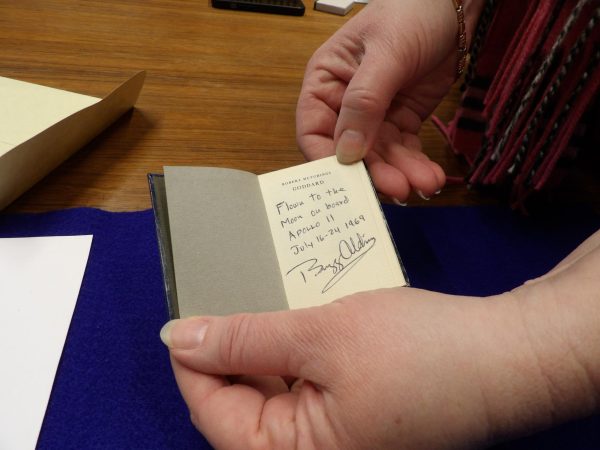
Conversely, the book St. Onge sent to Buzz Aldrin was enthusiastically received.
Aldrin, who was present at the ribbon-cutting of the Goddard Library (along with his father, Edwin Aldrin Sr., Clark class of 1915), signed the half-title page: “Flown to the moon on board APOLLO 11, July 16 – 24 1969.”
St. Onge had initially sent Aldrin two copies of the autobiography, hoping that one could be left on the surface of the moon. NASA forbade the crew from leaving anything unnecessary behind, however, so both books were brought back, according to ClarkNOW. The book came to Clark by way of Goddard’s widow, Esther Goddard.
The new addition to Clark’s collection, which made its own journey through the cosmos, also came to Clark by way of Achille St. Onge, whose personal library stamp marks the last page, and Esther Goddard, who signed the half-title page.
Before the second autobiography reached the Maine book dealer and Ross Heller, it was in the possession of a Swiss collector named Arno Gschwendtner. At first, his copy was identical, bound in blue leather with gold trim. Transforming St. Onge’s original by a “labor of love” took “much more than 100 hours in the last two years,” Gschwendtner wrote in a 2019 explanation of the book.
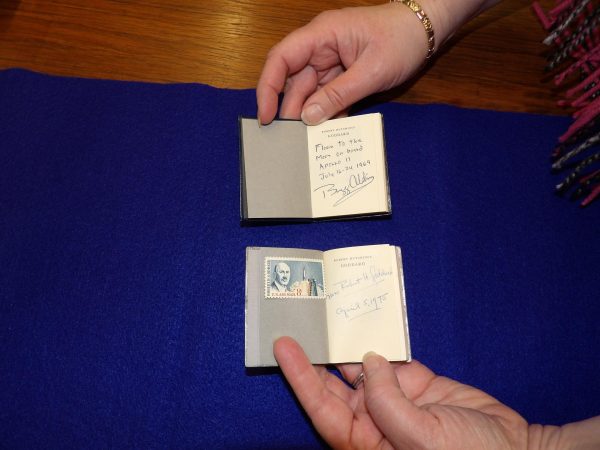
His project began simply with a desire to see if a miniature book could be bound in meteorite.
Gschwendtner wrote that he always intended for the book to have a fitting subject, though he only settled on the Goddard autobiography because of its perfect size and unique craftsmanship. “St. Onge books are among the best made miniature books in the world,” he explained. “From paper choice to printing and binding, they are as close to perfect as one can get.”
The first challenge was locating the perfect meteor fragment. Gschwendtner hoped to find an iron piece with a Widmanstätten pattern, which is the unmistakably otherworldly lattice of interlocking octahedrons found in some meteorite cross-sections. He purchased several pieces, none of which satisfied him until he came upon a chunk of the Muonionalusta meteorite. It was “the perfect size for the perfect cover,” he recalled. The debris is scattered across northern Scandinavia, where the meteorite impacted the earth some one million years ago.
Equally as challenging was finding someone confident enough to slice the fragment down to Gschwendtner’s specification of just one millimeter thick. Eventually, he tapped the services of “an old-world craftsman” who was experienced in cutting meteorites for use in luxury wristwatches.
The original leather binding was painstakingly removed and replaced with the sliced meteor fragment. It was then engraved to bear the same gilt lettering as the other 1,925 original copies that St. Onge had printed. According to the book’s appraisal, Heller’s donation is “rare and unique” given its costly binding, near-perfect condition and “association with the volume that traveled to the moon,” as well as its importance to Clark.
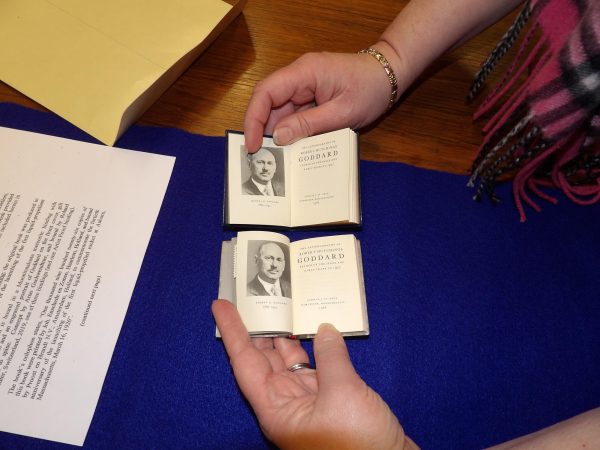
At home in Worcester
Heller’s donation “seemed to be a good match for us,” Shenette said, given its strong connection to the library’s prized “book that went to the moon.”
Heller believes that getting the book into Clark’s collections was important. He was concerned that the people eventually managing his estate might not realize the rare autobiography’s value, and that it may have just disappeared, had he not contacted the library. “I thought, better to make sure it gets to the right place at the right time,” Heller said. “And so that’s what I did.”

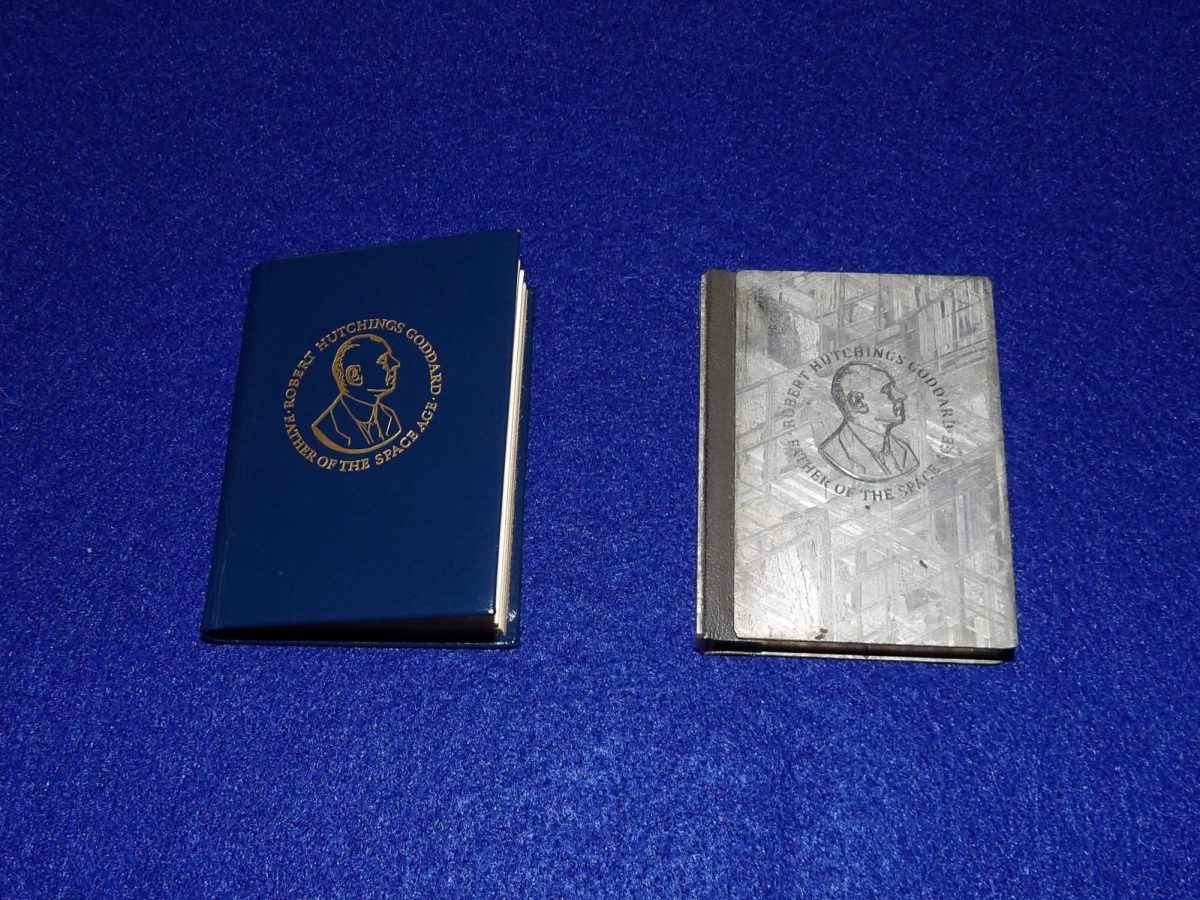

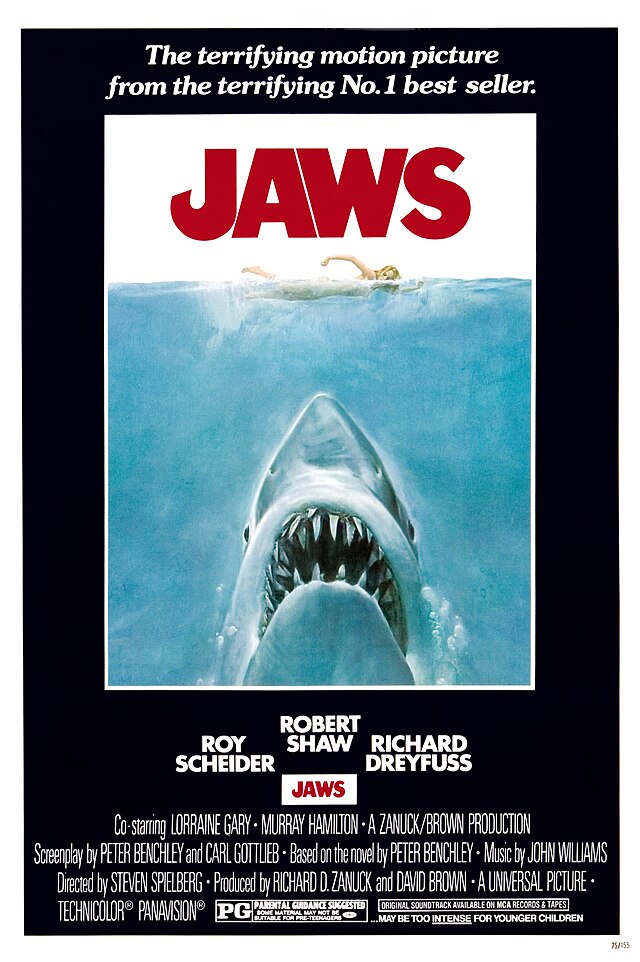

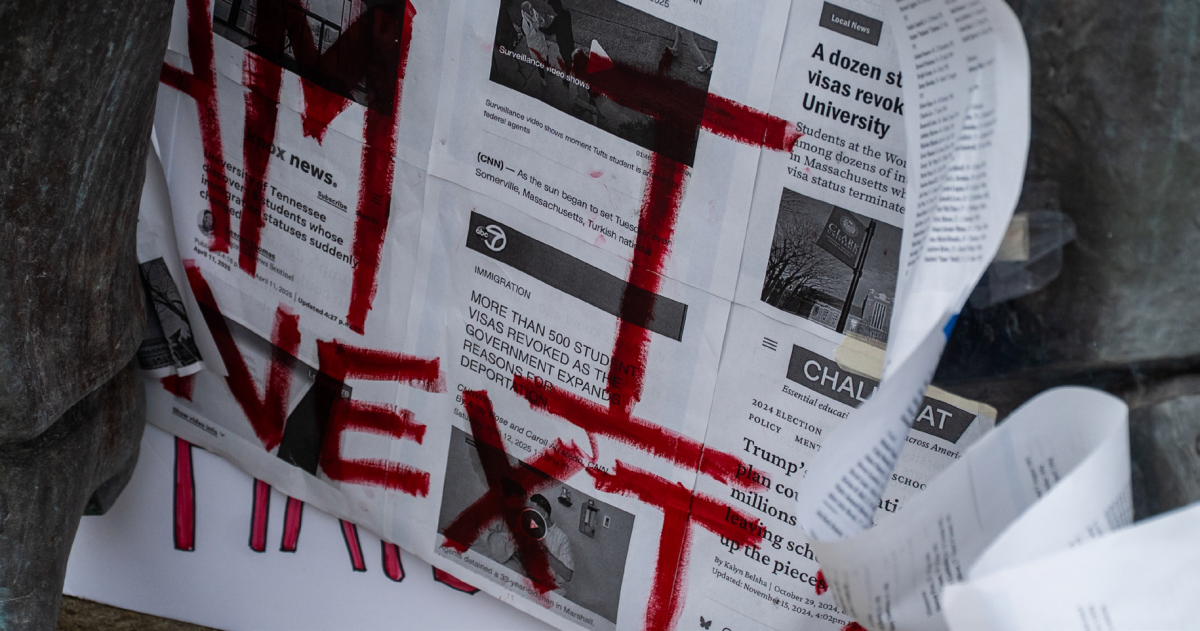
Denise Campbell ~ Feb 13, 2024 at 10:51 pm
What’s value of this leather miniature book by Onge